Meet our plenary speakers
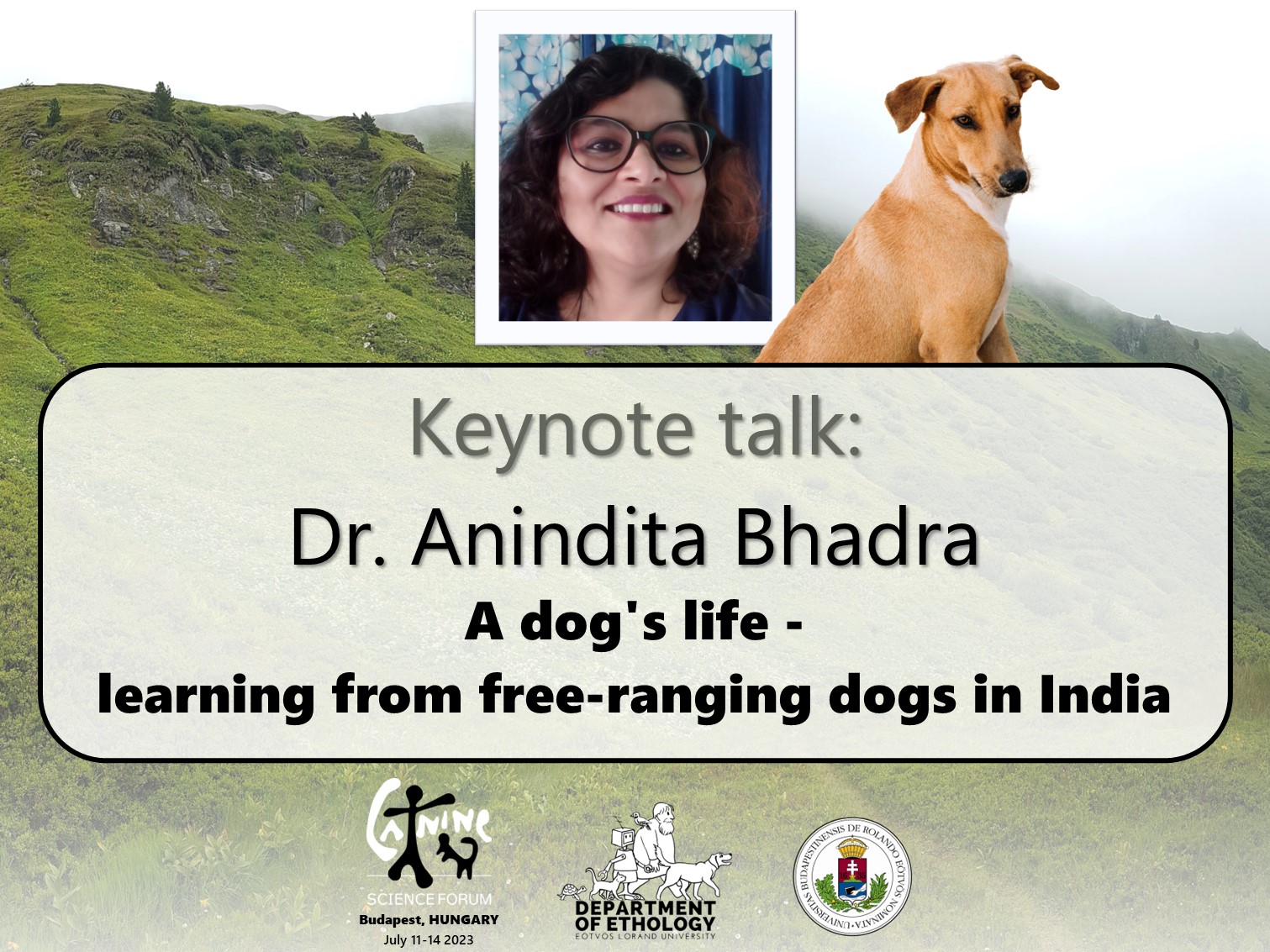
Dr. Anindita Bhadra
Anindita Bhadra is a behavioural biologist, who founded the Dog Lab at the Indian Institute of Science Education and Research Kolkata. She did her PhD on wasp politics, and shifted to working on the free ranging dogs when she started her independent research career. She is an Associate Professor and Associate Dean of International Relations and Outreach at IISER Kolkata.
“My talk will cover stories about the eco-ethology of free-ranging dogs in India. I will share our experience of working with this fascinating model system for the last 14 years, learning about their strategies for survival in the human jungle.”
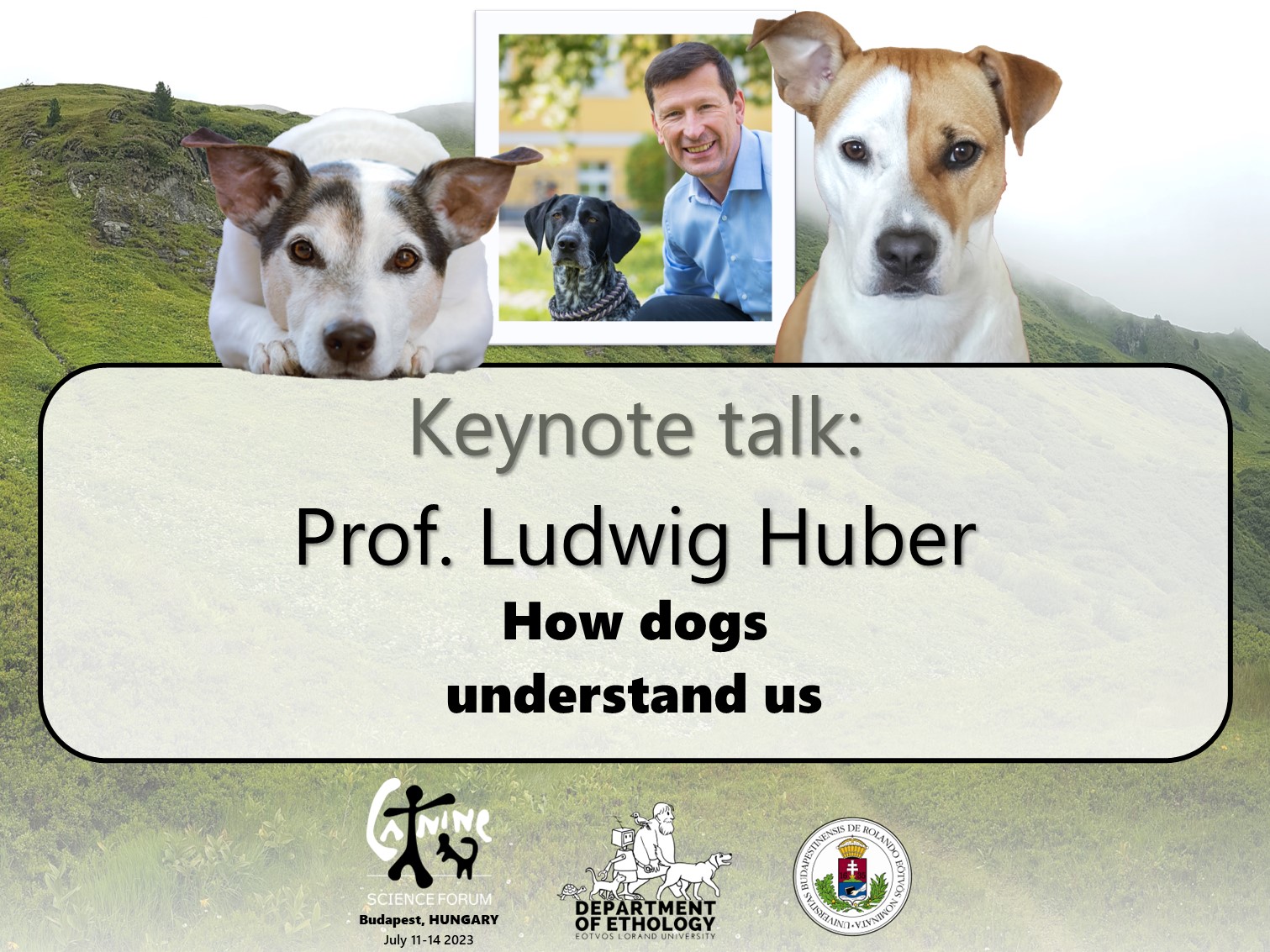
Prof. Ludwig Huber
Ludwig Huber is Professor of the Natural Science Foundations of Animal Ethics and Human-Animal Interactions at the Messerli Research Institute, an Interdisciplinary Institute of the University of Veterinary Medicine Vienna, the Medical University of Vienna, and the University of Vienna. There he is the Head of the Unit of Comparative Cognition, which includes the Clever Dog Lab Vienna and the Research Station on Cognition and Communication (Haidlhof). He is currently also the Head of the Messerli Research Institute and of the Department of Interdisciplinary Life Sciences.
Born 1964 in Neunkirchen (Lower Austria), Ludwig Huber studied zoology and philosophy at the University of Vienna. He received his doctorate in 1991, was an assistant to Rupert Riedl and habilitated at the University of Vienna in 2000. He led the Department of Theoretical Biology at the Institute of Zoology (1995-2003), then the the Emerging Focus "Cognition" of the Faculty of Life Sciences (2005-2009) and later the co-founded Department of Cognitive Biology. In 2011, he moved to the University of Veterinary Medicine Vienna to become full professor and co-founder of the Messerli Research Institute. His research focuses on animal cognition in a broad, comparative manner, including such diverse species as humans, marmosets, dogs, kea, pigeons, tortoise, lizards, poison frogs and archer fish.
The main research interests have been on perception, categorization and concept formation (in pigeons, dogs and humans), on social learning (in marmosets, dogs and pigs), on technical intelligence, exploration and tool use (in kea, Goffin cockatoos and capuchin monkeys), on emotion and empathy (in dogs), on human-animal interaction (in dogs, pigs and horses), on the evolution of social cognition (in tortoise and lizards), and on animal ethics and human-animal-interactions in general. He has (co-)authored ca. 170 research articles, 40 book chapters and 3 books about these topics.
“In recent years, researchers from both applied and basic cynology have become increasingly interested in how dogs understand us humans, given that they show impressive abilities for interacting and communicating with us. Such level of heterospecific understanding is especially interesting because decoding social signals across species boundaries is extremely challenging. In dogs, researchers assume both phylogenetic and ontogenetic sources for this ability. That is, a combination of both domestication and latent learning during a pet dog’s life in the human environment. And the function of this skill seems obvious when we consider how well dogs work for and alongside us. But what are the underlying cognitive mechanisms? My lab’s ongoing research has been seeking answers to this fundamental question of canine cognition by using state-of-the-art technology, such as touchscreen-based learning environments, eye-tracking, 3D tracking and fMRI. In my talk, I would like to present recent findings that show precisely how well dogs discriminate our facial expressions, copy us, follow us, and even take on our perspective. By being sensitive to what we see, know, intend, and believe, dogs manage to infer and anticipate what we do next, which, until very recently, was only conceded to humans and great apes. The cumulative knowledge of how dogs perceive and understand us is important for our appraisal and appreciation of the very nature of Canis familiaris.”

Dr. Erin Hecht
Erin Hecht is an Assistant Professor in the Department of Human Evolutionary Biology at Harvard University, where she has directed the Canine Brains Project since 2019. She received her Ph.D. in Neuroscience from Emory University in 2013. Her lab studies the evolution of brains and behavior in humans, our primate relatives, domestic dogs, foxes, and other species. This research asks how brains change in response to selection pressure on behavior, and how brains acquire heritable adaptations for complex, learned behaviors. One line of work compares brain-behavior relationships in humans and our primate relatives. Another area of research is focused on canids, including domestic dogs and selectively-bred foxes, which have evolved large brains and complex sociality in parallel with humans. This integrative research combines theoretical perspectives and methodological techniques from the fields of neuroscience, ethology, veterinary science, anthropology, and psychology. She is a 2022 Sloan Fellow in Neuroscience and has received research sponsorship from the National Science Foundation, Wenner-Gren Foundation, and National Institutes of Health (USA). Her work has been covered in media outlets such as Discover, Scientific American, National Geographic, Science Magazine, and the Washington Post.
“What can neuroscience tell us about canine behavior? In humans and our primate relatives, decades of research have examined how variation in brain structure and function is linked to variation in cognition, perception, and emotion. Surprisingly, these approaches are only just beginning to be applied to canines. This talk will describe three canine behavioral neuroscience studies. The first study compared brains of tame, aggressive, and conventional farm foxes from the experimental domestication project at the Institute of Cytology and Genetics at Novosibirsk in the Russian Academy of Sciences. In this program, animals are bred solely based on their social approach/avoidance behavior toward humans. Analyses revealed changes to prefrontal-limbic networks – surprisingly, sometimes in the same direction for tame and aggressive foxes. A second study analyzed MRI scans in domestic dogs. We identified significant differences in brain networks across breed groups. These networks appear to map onto breed-specialized skills such as hunting, herding, and guarding, suggesting that selective breeding by humans has had a significant effect on dog brain anatomy. In the third study, we examined the same dataset in relation to breed-average temperament measurements as indexed by C-BARQ. This revealed that brain organization can also be linked to traits like fear, aggression, and trainability. Together, these results are relevant for understanding general mechanisms of brain-behavior evolution and the specific mechanisms underlying variation in behavior in domesticated canids.”
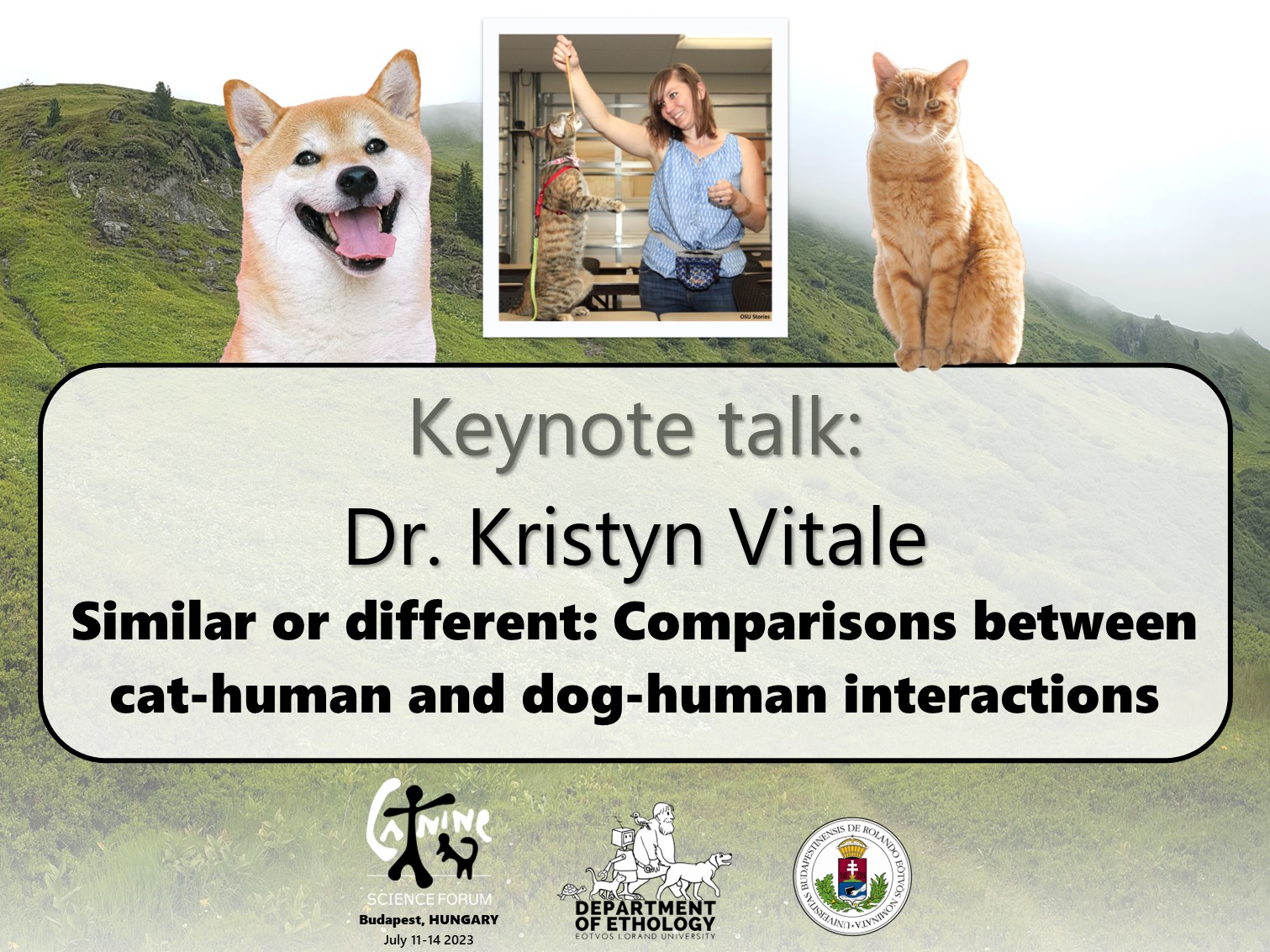
Dr. Kristyn Vitale
Kristyn Vitale is an Assistant Professor of Animal Health and Behavior at Unity College (Maine, USA). She received a Master’s in Environmental Science from Miami University and a Ph.D. in Animal Science from Oregon State University (OSU). During her graduate career she was a National Science Foundation Graduate Research Fellow (USA) and a Visiting Research Fellow at Kyoto University (Japan). She also served as a Maddie’s Postdoctoral Scholar and a Faculty Research Assistant in the OSU Human-Animal Interaction Lab. Her academic accomplishments include winning the Marian Breland-Bailey Award for Student Research & Scholarship (ABAI, 2017) and the Brenda A. Milner Award for Outstanding Paper (APA Div. 6, 2021). She has supported research into dog assisted interventions for children and research into the impact of human socialization on domestic pig behavior. Her main area of research is focused on cat social behavior, human-cat interactions, and the impact of life experiences, such as cat training and socialization classes, on cat cognition and the cat-human relationship. Her research and expertise in cat behavior has been internationally featured in media outlets such as National Geographic, Science Magazine, BBC, The Washington Post, The New York Times, and DER SPIEGEL. Her work has also been featured in film documentaries such as How the Cat Conquered the World (ARTE France) and Inside the Mind of a Cat (Netflix).
“Cats and dogs are the most popular companion animals in the world and given their popularity it is inevitable that they are commonly compared to one another. Although the public may perceive considerable differences in the sociability and social abilities of dogs and cats, are these differences supported by science? This talk will explore the similarities and differences between dogs and cats, namely in their social behavior, socio-cognitive abilities, and interactions with humans. Although species-specific differences exist, many similarities also exist which have contributed to the popularity of these animals in the lives of humans.”
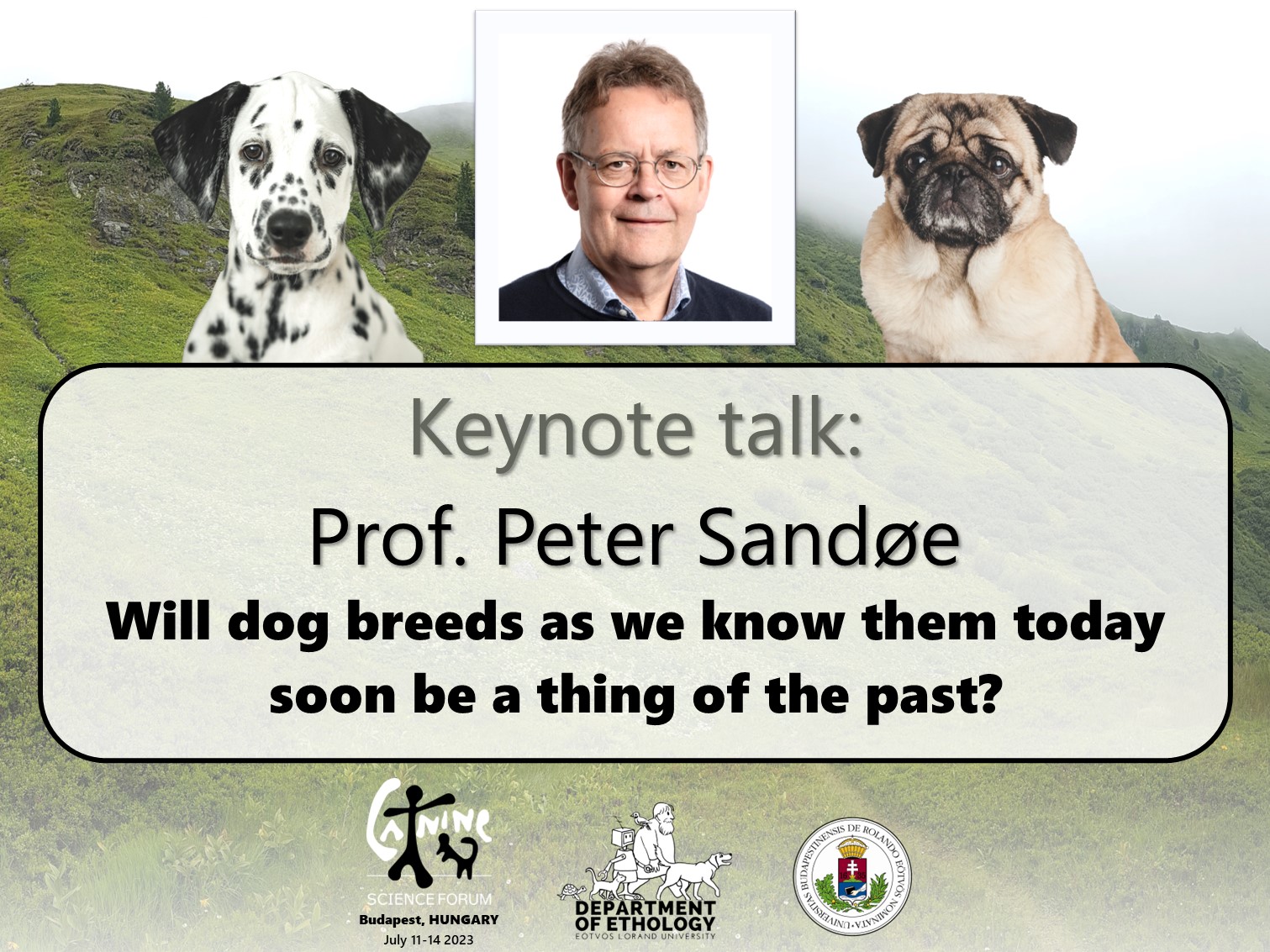
Prof. Peter Sandøe
Peter Sandøe is originally trained as a philosopher at the University of Copenhagen and at Oxford University. He has been professor of bioethics at the University of Copenhagen since 1997, presently with his chair divided between the Department of Veterinary and Animal Sciences and the Department of Food and Resource Economics. Since 2020 he has been director of the Centre for Companion Animal Welfare. He is committed to interdisciplinary work combining perspectives from natural science, social sciences and philosophy. For more information about his research in the field of animal ethics, animal welfare, human-animal relations, and veterinary ethics see www.animalethics.net. Peter is also an active participant in public outreach and debates, both nationally and internationally.
“Purebred pedigree dogs emerged in England in the middle of the nineteenth century and have had a major effect on the dog population, notably in Europe and North America. Only dogs with a pedigree documenting that they are descendants of a finite group of founders qualify as genuine members of the breed, and until recently organized dog breeding was controlled by breeding organizations. Around the turn of the 21st century, it was estimated that in Northern Europe over 75% of dogs were purebred, even though not all of them had a pedigree, and most of the rest were mixes of recognisable breeds.
However, several recent trends suggest that this dominance of purebred dogs is fading: 1) Diminishing influence of the traditional kennel clubs, particularly for some of the fashion breeds. 2) The emergence of ‘designer breeds’, such as Labradoodles and Cockapoos, where existing purebreeds are purposely mixed. 3) A growing interest in a new kind of dog called the ‘rescue dog’ based on its source rather than its traits or body shape. 4) A growing focus on the negative health and welfare of purebred dogs due to breeding in small populations and due to a preference for extreme phenotypes. 5) Some of the extreme breeds, notably the brachycephalic ones, are being outlawed in parts of Europe. In light of these trends we will discuss whether dog breeds as we know them today will soon cease to exist and if so whether this would be a positive development.”

Dr. Attila Andics
After obtaining master’s degrees in cognitive neuroscience, psychology, mathematics and teaching, Attila Andics pursued a PhD on voice neurocognition in the Max Planck Institute for psycholinguistics, Nijmegen. He joined the ELTE Department of Ethology, Budapest in 2012 to play a central role in laying the foundations for dog brain imaging. His ERC-funded research group (Neuroethology of Communication Lab) takes a comparative perspective, combining ethological, psycholinguistic and cognitive neuroscientific methods (EEG, fMRI, HD-DOT) to investigate the evolution of the neural mechanisms underlying voice and speech perception in dogs, pigs and humans.
“Dogs navigate efficiently in the human social niche. Whether their human communicative cue reading performance is supported by neural processing preferences is largely unknown. Are dog brains, as a consequence of domestication and/or living with humans, specialized in human faces and voices, similarly to our brains? And do dogs exhibit brain sensitivities to some stimulus parameters that are specific and central to speech? Despite evidence for certain neural preferences for processing information about others and also for a human-analogue speech processing hierarchy, until recently no results have convincingly demonstrated that dog brains would be tuned to humans. In this talk I overview our latest awake dog EEG and fMRI findings on the topic.“

Dr. Jennifer Meadows
Jennifer Meadows is a senior research scientist at Uppsala University, Sweden. The long-term research goals of Jennifer Meadows’ research group are to identify the genes and molecular variants that underpin traits of importance to both the health and well-being of companion animals. Paired with this is a comparative genetics aspect, where through international collaborative efforts, research findings are translated to aid human patients with orthologous disease sets.
“In the last five years, the field of dog genetics has exploded. We now have multiple reference genomes, every expanding catalogues of single nucleotide and structural variation, as well as information on gene content and the timing and location of gene expression. But how can we use this information to understand canine biology and dissect disease genetics?
In this talk, I will first discuss Phase I of the Dog10K project and the release of >30M single nucleotide- and structural variants from 1929 individuals; 1591 mixed and breed dogs, 281 village dogs and 57 wolves. The variant set spans the autosomes, X chromosome and mitochondria. This diverse dataset allows us to see where variation naturally occurs in the genome, and to begin the search for sites with a breed, or species restricted allele frequency. I will follow this with a discussion of the tools available to dissect the function of variants in the coding and non-coding regions of the dog genome. This includes the recently released Zoonomia constraint scores derived from 240 mammals.
Zoonomia constraint scores allow us to identify likely functional regions of the genome, gene bodies and non-coding regulatory elements, even if the key tissue or time-point is yet to be experimentally assayed. This is possible as genomic positions with high constraint, highlight those positions that are likely key to function, and that are under high pressure not to change. In the case of Zoonomia, this is pressure was over ~100 million years of mammalian evolution.
In closing, I will bring the dog genome, variant catalogues and constraint together, with case examples of breed restricted variants and their potential impact on gene function, as well as discussing how constraint can allow us to examine those regions of the genome that allow a population to adapt to its environment.
Both the Dog10K data and Zoonomia scores are freely available for community use.”

Dr. Annika Bremhorst
Annika Bremhorst is an early career researcher with a passion for studying animal behaviour, emotion, and welfare, specialising in canine science. Her primary research aim is to investigate how behaviour (primarily facial but also body) can help to identify underlying states, such as emotions and pain, in dogs. Through her work, she has contributed to novel approaches and methodological advancements in the field and expanded our understanding of canine emotion indicators. Beyond, she contributed to research around therapy and assistance dogs, animal ethics, and computer science, and she has a strong passion for science communication. Currently, she continues to pursue her research as a visiting postdoctoral research fellow at the University of Lincoln.
Her academic background includes a joint PhD from the University of Bern and the University of Lincoln, an interdisciplinary MSc in Comparative Cognition and Animal Ethics from the University of Veterinary Medicine Vienna, and a BSc in Behavioural Biology from the University of Göttingen. She has published several articles on her research in peer-reviewed journals and contributed to academic book chapters on different topics related to dogs. She has been recognised for her work with different research awards and prizes, including a Recognition Award from the Albert-Heim Foundation, a Young Scientist Paper Award from Vetsuisse Faculties Bern and Zürich, and a Rupert-Riedl-Preis from the Club of Vienna.
Following the completion of her PhD, she also established a (canine) science-based entrepreneurship. She is the founder and director of Dogs and Science - Institute for Canine Science and Applied Cynology. The institute comprises three main areas of focus: science (and related services), science communication, and practice/consultation related to the field of canine science and dogs. Through her institute, she is committed to promoting the welfare of dogs, advancing the field of canine science, and facilitating exchanges and knowledge transfer between (canine) science and the public.
In addition to her academic achievements, she is a dog behaviour consultant and trainer with the official label "Dog trainer in accordance with animal welfare" from the Republic of Austria. She has a strong dedication to science and believes in using science-based methods to improve the lives of dogs.
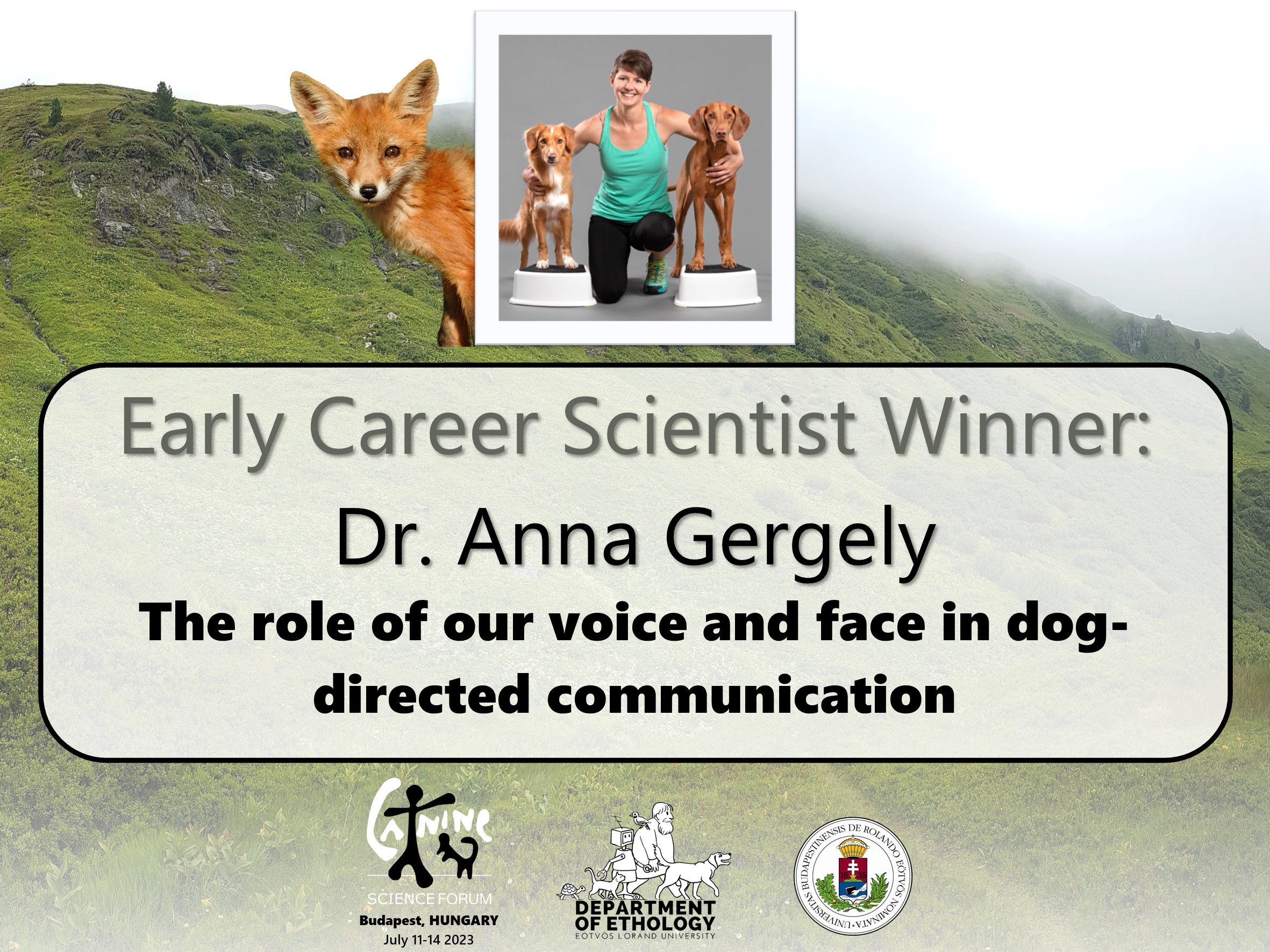
Dr. Anna Gergely
Anna Gergely is a Research Fellow in the Institute of Cognitive Neuroscience and Psychology at the Research Center for Natural Sciences (RCNS, Budapest, Hungary). She studied zoology and biology at the Veterinary University of Budapest and received her Ph.D in Ethology from Eötvös Lorand University in 2015. She studied canine cognition from 2006 at the Department of Ethology (ELTE, Hungary) and the Hungarian Academy of Sciences under the supervision of Ádám Miklósi and József Topál. From her master years, she started conducting comparative investigations on dog's and infant's communicative skills. During her Ph.D she was found by the SWARMIX project from the Swiss National Science Foundation (SNSF) and focused on dog-robot interactions. As a post-doc, she started to work in the Comparative Behavioural Research Group, led by József Topál, at the RCNS (former Hungarian Academy of Sciences) and won two, 4 year-long fundings as a principal investigator from the National Research, Development and Innovation Office. Her main area of research is focusing on the acoustic and facial communicative aspects of dog-directed and infant-directed communication in a comparative framework as well as on dog's socio-communicative behaviour and neural mechanisms in response to these human signals. In addition to her sicentific work, she was a lecturer at the Pázmány Péter Catholic University for 8 years and she regularly presents scientific lectures for lay audience on various topics of ethology. She is also a Professional Canine Fitness Trainer (CPCFT) and she is an international competitor in a dog sport called FCI Obedience.
